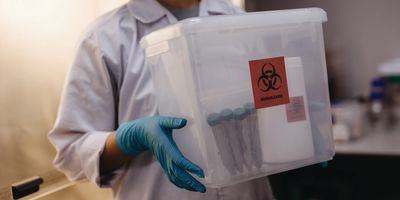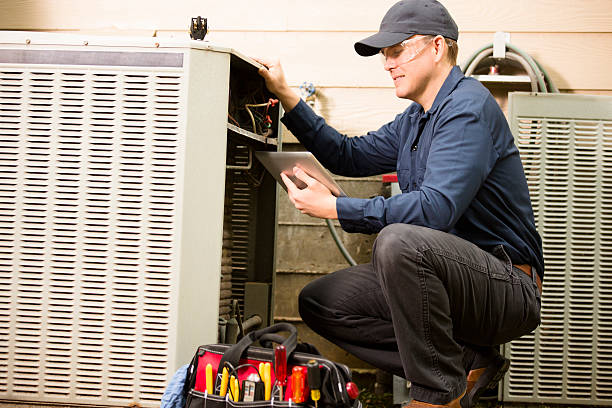Resolving contamination in lab gas supply

The Silent Threat: Unmasking Contamination in Lab Gas Supply

In the realm of scientific research, precision and reliability are paramount. Laboratories, the very heart of scientific exploration, rely on a complex network of systems to ensure the integrity of experiments and the validity of results. Among these critical systems, lab gas supply stands as a silent guardian, providing the essential gases that fuel countless scientific endeavors. However, lurking within this seemingly innocuous infrastructure lies a potential threat: contamination.
Lab gas contamination, an insidious issue that can compromise the accuracy and reproducibility of experiments, is a pervasive concern across diverse scientific disciplines. From the delicate manipulations of molecular biology to the intricate analyses of materials science, the purity of lab gases is paramount. Even trace amounts of contaminants can have profound consequences, leading to erroneous data, compromised results, and ultimately, a loss of confidence in scientific findings.
The consequences of lab gas contamination extend far beyond the confines of individual experiments. In a world where scientific breakthroughs drive innovation and shape the future, contaminated gas supplies can have ripple effects that impact the entire scientific community. From the development of new pharmaceuticals and therapies to the advancement of cutting-edge technologies, the integrity of scientific research is inextricably linked to the purity of lab gases.
The challenge of ensuring lab gas purity is multifaceted, encompassing a complex interplay of factors. The design and maintenance of Gas Piping & Distribution Systems, the quality of gas sources, and the presence of potential contaminants within the laboratory environment all contribute to the risk of contamination. Understanding the root causes of contamination and implementing effective mitigation strategies is crucial for safeguarding the integrity of scientific research.
This article delves into the intricacies of lab gas contamination, exploring the sources, mechanisms, and consequences of this insidious issue. We will examine the critical role of Gas Piping & Distribution Systems in preventing contamination and discuss best practices for ensuring the purity of lab gases. By shedding light on this often-overlooked aspect of laboratory infrastructure, we aim to empower researchers, lab managers, and procurement professionals with the knowledge and tools necessary to mitigate the risks of contamination and ensure the reliability of their scientific endeavors.
Preventing Future Contamination: A Proactive Approach
The journey to resolving contamination in lab gas supply is not merely about addressing the immediate issue. It's about establishing a robust system that minimizes the risk of future contamination. This requires a shift in perspective, moving from reactive problem-solving to proactive prevention. This shift involves a comprehensive approach that encompasses every stage of the gas supply chain, from procurement to delivery and utilization.
A Multifaceted Approach to Prevention
The key to preventing future contamination lies in understanding the root causes and implementing preventative measures at every stage. This involves a multi-faceted approach that addresses the following:
1. Procurement and Sourcing
The journey towards contamination-free gas supply begins with the procurement process. Choosing the right supplier is crucial. Look for suppliers with a proven track record of quality control, stringent purity standards, and a commitment to minimizing contamination risks.
Furthermore, consider the following:
- Gas Purity Standards: Ensure the gas you procure meets the specific purity requirements of your applications.
- Supplier Audits: Conduct regular audits of your suppliers to verify their quality control processes and adherence to industry standards.
- Documentation: Request and review documentation, including certificates of analysis (CoA), to confirm gas purity and traceability.
2. Gas Piping & Distribution Systems
The gas piping and distribution system is the backbone of your lab's gas supply. A well-designed and maintained system is essential for ensuring gas purity and preventing contamination.
Here are some key considerations:
- Material Selection: Choose materials that are compatible with the gases you are using and resistant to corrosion. Stainless steel is often the preferred choice for its durability and resistance to contamination.
- System Design: Ensure the system is designed to minimize dead legs, which can trap contaminants.
- Regular Maintenance: Implement a regular maintenance schedule for your gas piping and distribution system. This includes leak checks, cleaning, and purging to remove any accumulated contaminants.
- Pressure Regulation: Use appropriate pressure regulators to ensure consistent gas flow and prevent pressure fluctuations that can lead to contamination.
3. Gas Cylinder Handling and Storage
Proper handling and storage of gas cylinders are critical to maintaining gas purity.
Here are some best practices:
- Cylinder Inspection: Inspect cylinders for any signs of damage or leaks before and after use.
- Storage Conditions: Store cylinders in a clean, dry, and well-ventilated area, away from heat sources and direct sunlight.
- Cylinder Handling: Use proper lifting techniques to avoid damaging cylinders.
- Cylinder Connections: Use clean and compatible connections to prevent contamination during cylinder changes.
4. Gas Purification and Filtration
In some cases, additional gas purification and filtration may be necessary to remove trace contaminants.
Consider the following:
- Point-of-Use Filtration: Install filters at the point of use to remove contaminants that may have entered the gas stream during distribution.
- Gas Purifiers: Use gas purifiers to remove specific contaminants, such as moisture, oxygen, or hydrocarbons.
- Filter Selection: Choose filters and purifiers that are compatible with the gas you are using and meet the required purity levels.
5. Monitoring and Analysis
Regular monitoring and analysis of your gas supply are essential to ensure ongoing purity and detect any potential contamination.
Here are some key steps:
- Gas Analyzers: Use gas analyzers to monitor the purity of your gas supply and detect any changes in composition.
- Sampling and Analysis: Regularly sample your gas supply and analyze it for contaminants.
- Data Logging: Maintain records of gas purity measurements and any corrective actions taken.
6. Training and Awareness
Training and awareness are crucial for preventing contamination.
Consider the following:
- Lab Personnel Training: Provide training to all lab personnel on proper gas handling, storage, and use.
- Contamination Awareness: Raise awareness about the potential sources of contamination and the importance of preventing it.
- Best Practices: Develop and implement best practices for gas handling and storage.
Building a Culture of Prevention
Preventing contamination in lab gas supply is not a one-time effort. It requires a continuous commitment to quality and a culture of prevention.
Here are some key steps to foster this culture:
- Leadership Commitment: Ensure that leadership is committed to maintaining gas purity and preventing contamination.
- Continuous Improvement: Implement a system for continuous improvement, regularly reviewing and updating your gas supply procedures.
- Open Communication: Encourage open communication about any potential contamination issues and share best practices.
The Importance of a Proactive Approach
By adopting a proactive approach to preventing contamination, you can significantly reduce the risk of compromised experiments, inaccurate results, and wasted resources. Remember, the goal is not just to resolve contamination when it occurs but to prevent it from happening in the first place. This requires a comprehensive strategy that addresses every stage of the gas supply chain, from procurement to utilization.
At IT Tech, we offer a range of solutions designed to optimize your lab's gas supply management and ensure contamination-free operations. Our suite of services and products includes:
- Gas Procurement Solutions: Streamline your gas procurement process to ensure purity and reliability from the source.
- Gas Delivery Systems: Implement advanced delivery systems to maintain gas integrity from cylinder to instrument.
- Gas Monitoring and Control: Utilize state-of-the-art monitoring and control technologies to detect and prevent contamination in real-time.
- Training and Support: Access expert training and support to empower your team in maintaining a contamination-free gas supply chain.
By implementing these preventative measures, you can ensure a reliable and contamination-free gas supply, supporting the integrity of your research and the success of your lab.
To further enhance your understanding of lab gas supply and ensure you're making the right choices for your specific needs, we encourage you to submit an enquiry to IT Tech. Our team will work with you to identify the best gas supply solutions based on your lab's unique requirements and applications.
Take the next step towards safeguarding the integrity of your scientific endeavors and contributing to the advancement of knowledge. Contact IT Tech today!
Subscribe to our newsletter
Stay updated with IT-Tech Insights
Related posts
Check out other IT- Tech Scientific Resources

Troubleshooting HVAC system failures
Maintaining a stable and controlled environment is crucial for any laboratory. HVAC systems play a vital role in ensuring optimal conditions for research and experimentation. This article provides a step-by-step guide to troubleshooting common HVAC system failures. We cover identifying potential issues, diagnosing problems, and exploring solutions to restore your lab's HVAC system to optimal performance. From temperature fluctuations to airflow problems, this guide equips you with the knowledge to address HVAC challenges and maintain a reliable lab environment.

Troubleshooting electrical failures and outages
Electrical failures and outages can disrupt lab operations, leading to lost time, wasted resources, and potential damage to equipment. This article guides you through the process of troubleshooting these issues, covering common causes such as faulty wiring, overloaded circuits, and power surges. We'll also discuss safety precautions to take when dealing with electrical problems, as well as effective solutions to restore power and prevent future occurrences. By understanding the fundamentals of electrical troubleshooting, you can minimize downtime, ensure the safety of your lab personnel, and maintain a productive research environment.

Troubleshooting lab equipment integration issues
Integrating lab equipment can be a complex process, and unexpected issues can arise. This article guides you through troubleshooting common integration problems. From connectivity issues to software conflicts, we cover a range of scenarios. We'll explore practical steps to diagnose the root cause, including checking cables, verifying software compatibility, and testing network connectivity. By following these steps, you can effectively resolve integration issues and ensure your lab equipment operates seamlessly. IT tech's Lab Engineering Services provides expert support for complex integration challenges, offering tailored solutions to optimize your lab's performance.
































.png)








